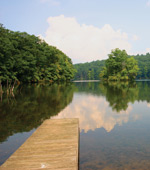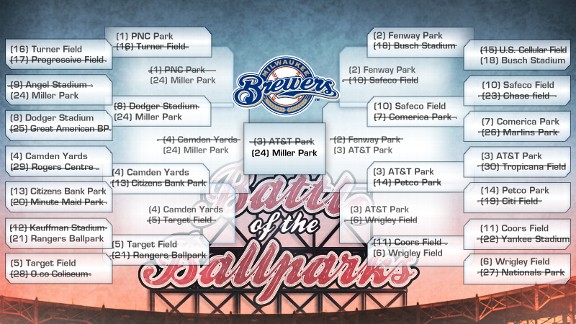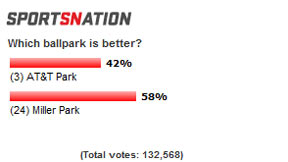WI LAKE HOME OWNERS NEWS - New Pier Grandfathering Legislation (edit/delete)
WI LAKE HOME OWNERS NEWS - New Pier Grandfathering Legislation Signed Into Law - Wisconsin REALTORS® Association
By: Tom Larson

On April 2, 2012, Governor Walker signed into law 2011 Wisconsin Act
167, legislation that grandfathers almost all existing piers. In
addition, the new law eliminates the pier registration requirement and
creates new standards for piers placed on or after April 17, 2012.
Finally, the new law guarantees that waterfront property owners have a right to place a pier, even if the property is located in areas that the Wisconsin Department of Natural Resources (DNR) considers to be environmentally significant.
However, both the DNR and lawmakers discovered that many more piers than originally anticipated would not qualify for grandfathering. In addition, very few piers that did qualify for grandfathering were registered with the DNR.
Accordingly, lawmakers decided that it would be best to resolve the pier grandfathering issue once and for all by grandfathering all existing piers.
In addition, the riparian owner does not need to register the pier with the DNR in order to grandfather the pier. All existing piers are automatically grandfathered unless the pier meets at least one of the two exceptions previously listed.
Note: REALTORS® should ask waterfront property owners if (a) they have received notice from the DNR that their pier is “detrimental to the public interest,” and (b)their pier interferes with the rights of other riparian owners.
First, the new law increases the boat density requirement under existing law to allow for personal watercraft, such as jetskis and waverunners. Under current law, waterfront property owners are allowed two boat slips for the first 50 feet of frontage and one boat slip for each additional 50 feet of frontage thereafter. Because a personal watercraft is often tied to a dock and is not placed in a “slip” or on a hoist or lift, the law is not clear as to whether any limits exist regarding the number of personal watercraft that a property owner may have. Accordingly, the new law allows riparians to have two personal watercraft for the first 50 feet of frontage and one additional personal watercraft for each additional 50 feet of frontage thereafter. This is in addition to the number of boat slips allowed under current law.
Second, the new law changes the maximum size requirement for loading platforms on new piers to 200 square feet in total area. Prior law allowed for a maximum width of eight feet wide but did not limit the total area. This change allows for greater flexibility in the size and dimensions of loading platforms so that riparian owners can determine what configuration would best meet their needs.
As a result of these changes, new piers can be placed without obtaining a permit from the DNR if the pier meets the following requirements:
While the new law did not eliminate the requirement to obtain a permit for a pier located in ASNRI waters, it does clarify that if a pier is located in an ASNRI, then (a) the pier is eligible for a general permit, and (b) the DNR may impose conditions on the location, design, construction and installation of a pier located in ASNRI waters, but the DNR may not prohibit the owner from placing a pier. In other words, the riparian owner is guaranteed the right to place a pier, but the exact dimensions may be determined by the DNR. This provision is intended to allow the DNR to determine the size, location and design of a pier to avoid any adverse impacts to sensitive areas like fish spawning areas and other sensitive habitats, but also protects the right of waterfront property owners to place a pier to access the waterway.
See the DNR’s website for an interactive map showing all of the lakes and rivers in Wisconsin that are designated ASNRI at http://dnrmaps.wi.gov/imf/imf.jsp?site=SurfaceWaterViewer.deswaters.
The 50 percent rule has been unfair to property owners because it applies retroactively to existing boathouses that were legal when originally constructed. Moreover, the rule had proven difficult to enforce because it is almost impossible for county zoning administrators to keep track of each dollar spent on necessary paint, boards and roofing shingles. As a result, it encouraged property owners to be dishonest about what they have spent on repairs and maintenance.
The new law eliminates application of the 50 percent rule to wet boathouses. As a result, riparian owners may perform unlimited maintenance and repair to these existing boathouses that were constructed before 1979. This new law change allows property owners to “keep what they have” but does not allow the boathouses to be expanded.
For more information on the new law, please contact Tom Larson (tlarson@wra.org) at (608) 240-8254.
Tom Larson is Vice President of Legal and Public Affairs for the WRA.
Finally, the new law guarantees that waterfront property owners have a right to place a pier, even if the property is located in areas that the Wisconsin Department of Natural Resources (DNR) considers to be environmentally significant.
Background
In 2007, Wisconsin lawmakers enacted a law that attempted to grandfather 99 percent of the existing piers from DNR permitting requirements. (2007 Wisconsin Act 204.) To be eligible for grandfathering, a pier was required to meet the following standards:- The pier must have been originally placed prior to February 6, 2004.
- The width of the pier could be no wider than eight feet.
- A loading platform or deck was allowed as long as it is located at the lakeward end of the pier and the platform had a surface area no greater than either (a) 200 square feet, which may be any width, or (b) 300 square feet, if the deck/platform is no wider than 10 feet.
However, both the DNR and lawmakers discovered that many more piers than originally anticipated would not qualify for grandfathering. In addition, very few piers that did qualify for grandfathering were registered with the DNR.
Accordingly, lawmakers decided that it would be best to resolve the pier grandfathering issue once and for all by grandfathering all existing piers.
Grandfathering of Existing Piers
Under the new law, all existing piers placed before April 17, 2012 are grandfathered unless:- a. The DNR notified the riparian owner before April 17, 2012 that the pier is “detrimental to the public interest.”
- b. Or if the pier “interferes with the riparian rights of other riparian owners.” A pier that extends into a neighbor’s riparian zone, which is the water in front of the neighbor’s property, is an example of a pier that would interfere with the neighbor’s riparian rights.
In addition, the riparian owner does not need to register the pier with the DNR in order to grandfather the pier. All existing piers are automatically grandfathered unless the pier meets at least one of the two exceptions previously listed.
Note: REALTORS® should ask waterfront property owners if (a) they have received notice from the DNR that their pier is “detrimental to the public interest,” and (b)their pier interferes with the rights of other riparian owners.
New Piers
In addition to the grandfathering provisions, the new law creates a few different standards for new piers, which are piers placed for the first time on or after April 17, 2012.First, the new law increases the boat density requirement under existing law to allow for personal watercraft, such as jetskis and waverunners. Under current law, waterfront property owners are allowed two boat slips for the first 50 feet of frontage and one boat slip for each additional 50 feet of frontage thereafter. Because a personal watercraft is often tied to a dock and is not placed in a “slip” or on a hoist or lift, the law is not clear as to whether any limits exist regarding the number of personal watercraft that a property owner may have. Accordingly, the new law allows riparians to have two personal watercraft for the first 50 feet of frontage and one additional personal watercraft for each additional 50 feet of frontage thereafter. This is in addition to the number of boat slips allowed under current law.
Second, the new law changes the maximum size requirement for loading platforms on new piers to 200 square feet in total area. Prior law allowed for a maximum width of eight feet wide but did not limit the total area. This change allows for greater flexibility in the size and dimensions of loading platforms so that riparian owners can determine what configuration would best meet their needs.
As a result of these changes, new piers can be placed without obtaining a permit from the DNR if the pier meets the following requirements:
- Width: No more than six feet wide.
- Length: No longer than what is necessary to moor your boat or use a boat lift, or 3-foot water depth, whichever is greater.
- Number of boats: Two boat slips/lifts for the first 50 feet of water frontage of your property, plus one more boat slip/lift for each additional 50 feet of frontage.
- Number of personal watercraft: Two personal watercraft for the first 50 feet of water frontage of your property, plus one more personal watercraft for each additional 50 feet of frontage.
- Loading platforms: A loading platform/deck with a surface area no greater than 200 square feet.
Piers Located in Areas of Special Natural Resource Interest (ASNRI)
Due to a law change in 2003, riparian owners located adjacent to a body of water considered by the DNR to be an area of special natural resource interest (ASNRI) were unable to lawfully place a pier without a permit. This problem was magnified by the fact that the definition of ASNRI is overly broad and includes any “area that possesses significant scientific value, as identified by the DNR.” This definition is vague and gives the DNR the discretion to designate any area to be an ASNRI. In fact, the term has been interpreted to mean not just specific areas in a lake, but the entire lake in some cases. As a result, riparian owners located adjacent to an ASNRI may be required to obtain a permit to place a pier and could be denied from placing a pier altogether.While the new law did not eliminate the requirement to obtain a permit for a pier located in ASNRI waters, it does clarify that if a pier is located in an ASNRI, then (a) the pier is eligible for a general permit, and (b) the DNR may impose conditions on the location, design, construction and installation of a pier located in ASNRI waters, but the DNR may not prohibit the owner from placing a pier. In other words, the riparian owner is guaranteed the right to place a pier, but the exact dimensions may be determined by the DNR. This provision is intended to allow the DNR to determine the size, location and design of a pier to avoid any adverse impacts to sensitive areas like fish spawning areas and other sensitive habitats, but also protects the right of waterfront property owners to place a pier to access the waterway.
See the DNR’s website for an interactive map showing all of the lakes and rivers in Wisconsin that are designated ASNRI at http://dnrmaps.wi.gov/imf/imf.jsp?site=SurfaceWaterViewer.deswaters.
Nonconforming Wet Boathouses
In addition to modifying the pier regulations, the new law eliminates the restrictions placed on the ability of riparian owners to maintain and repair wet boathouses, which are located below the ordinary high water mark. The restrictions limited the value of all maintenance and repairs over the life of the property to 50 percent of the assessed value of the boathouses, which was intended to eventually eliminate these boathouses by forcing them to fall into disrepair.The 50 percent rule has been unfair to property owners because it applies retroactively to existing boathouses that were legal when originally constructed. Moreover, the rule had proven difficult to enforce because it is almost impossible for county zoning administrators to keep track of each dollar spent on necessary paint, boards and roofing shingles. As a result, it encouraged property owners to be dishonest about what they have spent on repairs and maintenance.
The new law eliminates application of the 50 percent rule to wet boathouses. As a result, riparian owners may perform unlimited maintenance and repair to these existing boathouses that were constructed before 1979. This new law change allows property owners to “keep what they have” but does not allow the boathouses to be expanded.
For more information on the new law, please contact Tom Larson (tlarson@wra.org) at (608) 240-8254.
Tom Larson is Vice President of Legal and Public Affairs for the WRA.
Published: May 02, 2012
Welcome to Wisconsin Real Estate with Lisa Bear
Thank you for visiting. Please feel free to contact me for any of your real estate needs including an online market if you are a seller, or finding a home if you are a buyer. My real estate focus in the Waukesha County, Milwaukee County, Lake Country, Jefferson County, Dodge County and Washington County areas. I have my IRES designation (International Real Estate Specialist) so I can assist you with all your real estate needs in Wisconsin, the USA or anywhere in the WORLD!
When you are seriously looking or just browsing at real estate in Wisconsin, I am a great resource to help you with all your needs and questions, whether a first time home buyer, relocating to or from the beautiful LAKE COUNTRY area, looking to invest or explore foreclosure opportunities or just thinking ahead to the future.
Lisa Bear of RE/MAX (262-893-5555) is an experienced real estate agent in Waukesha County and the entire Milwaukee Metro area including:
Great municipalities in Milwaukee County including Milwaukee, South Milwaukee, Wauwatosa, Hales Corners, Greenfield, Glendale, Franklin, Bayside, Brown Deer, Cudahy, Fox Point, Greendale, Shorewood, Oak Creek, St. Francis, West Allis and Whitefish Bay.
The hometown favorites of Washington County, Jefferson County and Dodge County including Watertown, Hartford, West Bend, Germantown, Jackson, Richfield, Ashippun, Lake Mills, Jefferson, Johnson Creek, Slinger and Erin.
Real Estate in Wisconsin is an excellent investment!

"HELPING YOU MOVE IN THE RIGHT DIRECTION"












 ESPN.com IllustrationMiller Park knocked out some heavyweights (Camden Yards, PNC Park) to reach the championship.
ESPN.com IllustrationMiller Park knocked out some heavyweights (Camden Yards, PNC Park) to reach the championship.